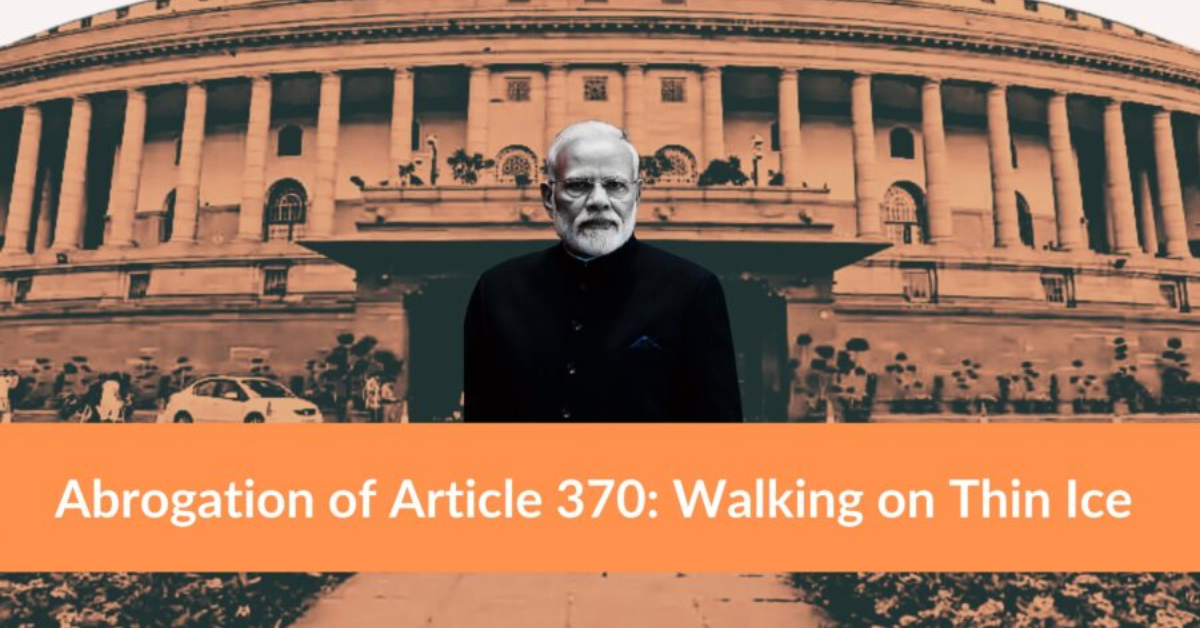The abrogation of Article 370 of the Indian Constitution on August 5, 2019, marked a historic shift in the legal and political landscape of Jammu and Kashmir. This article granted special status to the region, allowing it to have its own constitution and autonomy over internal affairs, except in matters of defense, foreign affairs, finance, and communications. Its removal has sparked extensive debate regarding its legal, constitutional, and socio-political ramifications.
Historical Background of Article 370
Article 370 was incorporated into the Indian Constitution in 1949, following the accession of Jammu and Kashmir to India in 1947. It was meant to be a temporary provision, allowing the state to have a distinct status under certain conditions. Over the years, various Presidential Orders diluted its autonomy, but its complete abrogation was a landmark moment.
Legal and Constitutional Aspects of the Abrogation
1. Presidential Order and Reorganization
The abrogation was carried out through a Presidential Order under Article 370(3), which modified Article 367 to redefine the term ‘Constituent Assembly’ as ‘Legislative Assembly.’ Given that Jammu and Kashmir’s Legislative Assembly was dissolved at the time, Parliament exercised its authority to recommend the revocation.
2. Reorganization of Jammu and Kashmir
Post-abrogation, the Jammu and Kashmir Reorganization Act, 2019, bifurcated the state into two Union Territories—Jammu & Kashmir (with a legislature) and Ladakh (without a legislature). This reorganization was significant in altering the governance structure of the region.
3. Legal Challenges and Supreme Court’s Stance
Several petitions challenged the abrogation in the Supreme Court, arguing that Article 370 could not be revoked unilaterally without the consent of the Constituent Assembly. However, the government maintained that the provision was temporary and subject to modification.
Impact of the Abrogation
1. Political and Administrative Changes
The region has now been brought under the direct administration of the central government, allowing the implementation of Indian laws that were previously not applicable.
2. Economic and Developmental Aspects
With the removal of restrictions on property ownership, businesses and private investments are expected to increase. Government initiatives have aimed at improving infrastructure, tourism, and employment opportunities.
3. Security and Law Enforcement
Security measures, including restrictions on communication and political detentions, were imposed to prevent unrest. While the government argues that the situation has stabilized, concerns remain regarding political representation and democratic processes.
Future Implications and Challenges
1. Legal Challenges and Interpretation
The Supreme Court’s final verdict on the constitutionality of the abrogation will have long-term consequences on the federal structure of India.
2. Political Representation and Governance
Restoration of statehood and assembly elections in Jammu and Kashmir remains a contentious issue. Political parties continue to demand a return to full statehood with greater autonomy.
3. Social and Human Rights Concerns
While development initiatives are underway, concerns about civil liberties, internet shutdowns, and political detentions continue to be raised by human rights organizations.
Conclusion
The abrogation of Article 370 has been one of the most significant constitutional and political developments in India’s history. While it aims to integrate Jammu and Kashmir more closely with the rest of the country, the region’s future will depend on effective governance, economic progress, and political stability.

